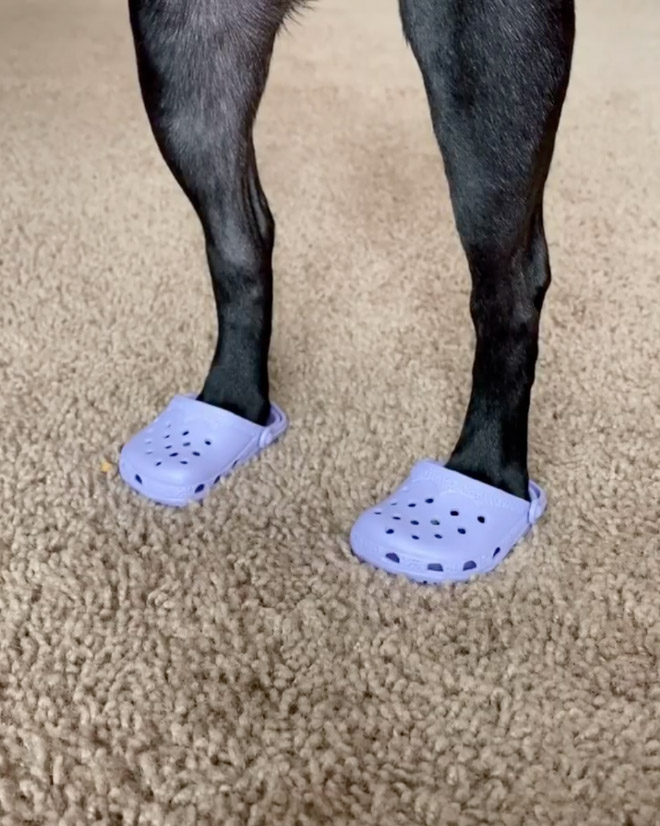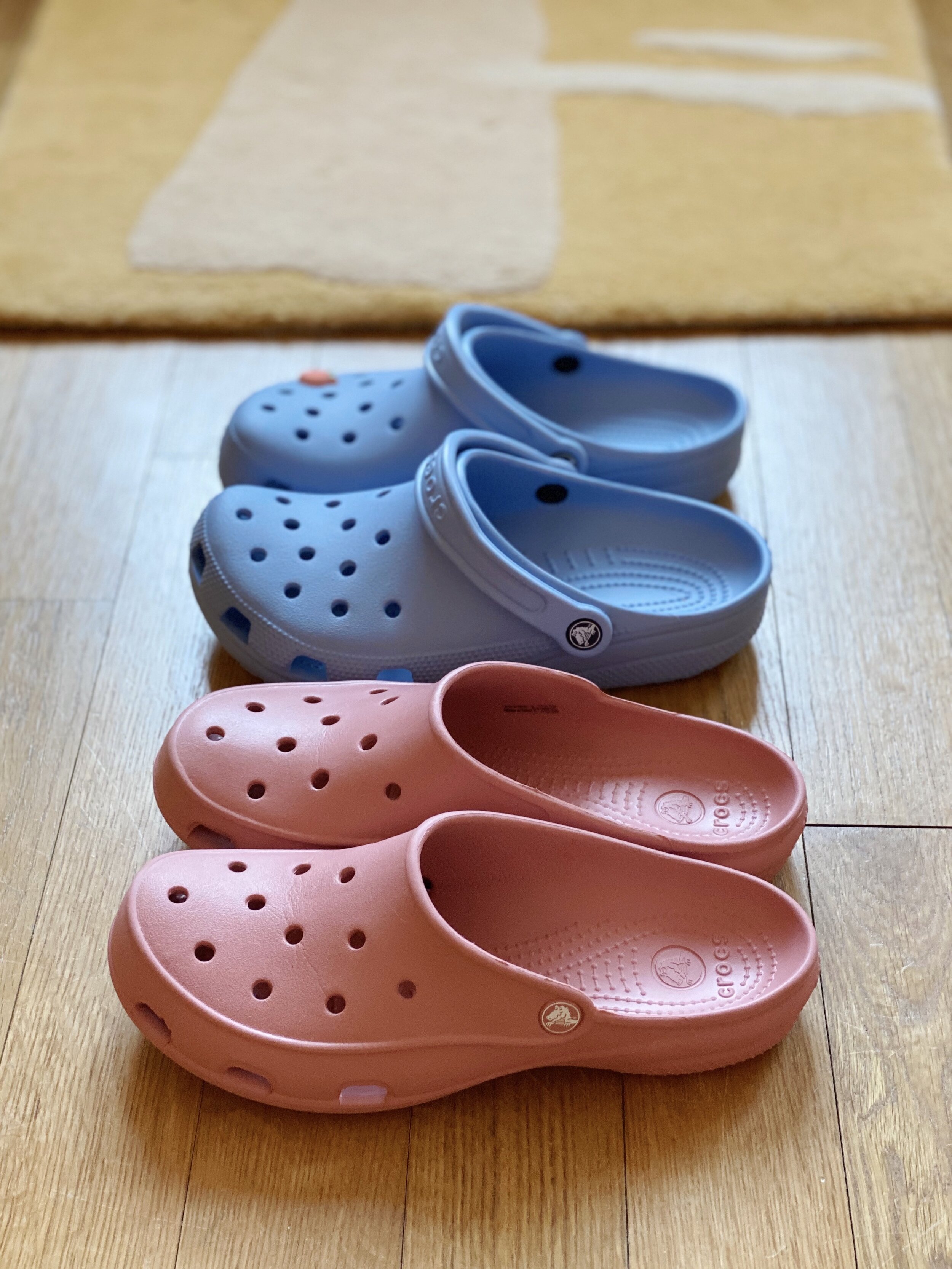Can you, in a moment of extreme desperation, consider your Crocs as a potential meal? The answer, definitively, is no; despite the playful curiosity surrounding this question, Crocs are not designed for consumption and pose a risk to your health, firmly placing them in the do not eat category.
The enduring fascination with the edibility of Crocs, the ubiquitous foam clogs, stems from a blend of pop culture whimsy and genuine curiosity. The mere idea of consuming footwear, even in a hypothetical survival scenario, triggers a sense of cognitive dissonance. It's a testament to the power of the internet to turn the mundane into the absurd and to the human tendency to question boundaries, no matter how bizarre. However, beneath the surface of the playful query lies a complex interplay of material science, health considerations, and the broader implications of our relationship with food and the environment.
| Aspect | Details |
|---|---|
| Material Composition | Crocs are primarily made from a closed-cell resin called Croslite, a proprietary material. |
| Toxicity | Croslite is generally considered non-toxic, meaning it's not inherently poisonous in small amounts. |
| Edibility | Crocs are NOT edible. While non-toxic, they offer no nutritional value and are not meant for consumption. |
| Health Risks | Ingesting Crocs can lead to digestive issues, blockages, stomach pain, and potential exposure to chemical components not intended for ingestion. |
| Burning | Burning Crocs is possible, but it releases unpleasant odors and potentially harmful fumes, making it a poor and unsafe option for any kind of food. |
| Company Stance | Crocs Inc. explicitly advises against eating their shoes, emphasizing their lack of nutritional value and potential health hazards. |
| Urban Legends | Rumors about the edibility of Crocs persist online and are often fueled by internet challenges and playful speculation. |
| Sustainability | The discussion surrounding the edibility of Crocs indirectly touches upon the broader context of sustainability and alternative food sources, though Crocs themselves do not qualify as such. |
| Chemical Analysis | A chemist would be able to analyze the Croslite material in detail, identifying its specific chemical components and explaining their properties. |
| Legal Considerations | There are no specific legal restrictions against eating Crocs, but the act is ill-advised and potentially harmful. |
| Digestive Issues | Ingesting the material of Crocs shoes can cause the issues related to digestion that the human body can't process. |
| Nutritional Value | Crocs have no nutritional value, which is a key point against consuming them. |
| Environmental Impact | The debate does not directly involve an environmental aspect, but it can open the door for considering the larger ecological impacts of mass production. |
| Alternative | The idea of eating Crocs sparks the imagination about survival and alternative diets, it should be noted that many other food sources exist that are safer and more nutritional. |
| Reference | Official Crocs Website |
The initial spark of interest in eating Crocs likely arose from the material itself. Croslite, the proprietary closed-cell resin used in their construction, is often described as being non-toxic. This seemingly harmless attribute, coupled with the shoes' ubiquitous presence, has fueled the question of their potential edibility.
However, it is crucial to understand the difference between non-toxic and edible. While Croslite may not be inherently poisonous in small quantities, it is certainly not designed to be digested. The manufacturing processes and the materials used in Crocs, even if technically non-toxic, are not created with the intention of human consumption. Ingestion of footwear could lead to a range of unpleasant outcomes, including digestive distress, intestinal blockages, and potential exposure to trace chemical components.
The narrative has been further perpetuated by internet challenges, playful speculation, and the inherent absurdity of the idea. The concept of eating a shoe has a certain shock value, generating clicks and engagement across social media platforms. These online discussions often lack scientific rigor, treating the question as a joke rather than a matter of serious investigation. This playful approach is not inherently harmful but it is important to be well-versed with the truth regarding this.
Various sources provide insight into this unusual topic. One source, for instance, delves into the history of the urban legend, interviewing individuals who have attempted to eat Crocs and seeking expert opinions from chemists and representatives of the Crocs company itself. The company's stance is clear: Crocs are not food and should not be consumed.
Furthermore, there are other websites and publications that offer information on food safety and sustainability, including insights into which items are safe to eat, as opposed to items that are not. Examining the materials of Crocs in the framework of what constitutes food, reveals the material does not meet the requirements of nutritional value and would be potentially harmful.
Another aspect of the discussion revolves around the environmental implications of our consumer choices. The discussion of eating Crocs, though often humorous, can touch upon larger ecological themes. It can indirectly encourage discussions about the sustainability of manufacturing processes and the responsible disposal of materials. The use of plastics, rubber, and other synthetic compounds that make up the clogs are a point of discussion for the industry. However, even if Crocs were made from biodegradable or bio-based materials, they would still not be edible, as the manufacturing and components are not designed for human ingestion.
The act of burning Crocs is possible but not advisable. While the material may not be immediately dangerous, burning it leads to unpleasant smells and the release of fumes, making it an unsuitable way to produce a meal.
The discussion is not just a trivial issue; it brings up health and sustainability considerations. The act of eating Crocs could bring up potential health problems, especially regarding digestion. Ingesting the material of the shoes does not offer nutritional value and would bring a host of negative effects. It is important to note that Crocs do not in any way qualify as an alternative source of nutrition, and there are various other options that have far more benefits.
In conclusion, the idea of eating Crocs is a testament to human curiosity, but the practical implications are far less appealing. The material composition, the lack of nutritional value, and the potential for digestive distress or intestinal blockage all point to a simple truth: Crocs are for wearing, not eating. So, while it's entertaining to ponder the possibilities, the answer to the question Can you eat Crocs? remains a firm and unequivocal no.


:format(webp)/https://static-hk.zacdn.com/p/crocs-7292-1413726-1.jpg)
